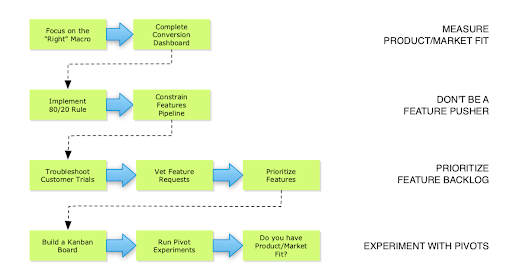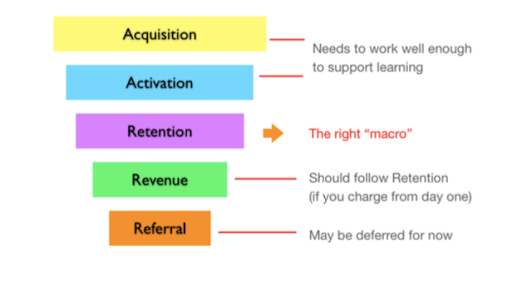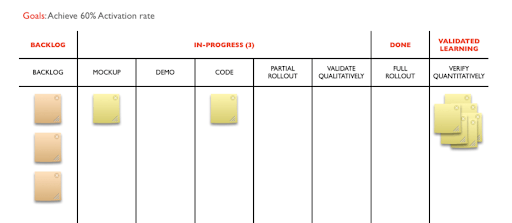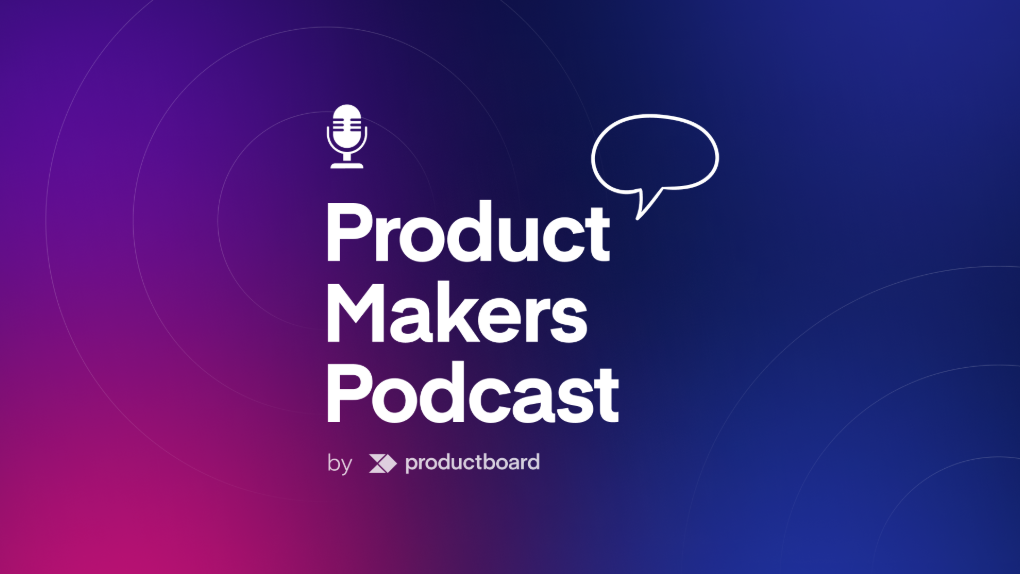Two tried-and-true frameworks for achieving product/market fit

In his famous post, Marc Andreessen gave us a clear illustration of what product/market fit feels like:
“You can always feel when product/market fit isn’t happening. The customers aren’t quite getting value out of the product, word of mouth isn’t spreading, usage isn’t growing that fast, press reviews are kind of “blah,” the sales cycle takes too long, and lots of deals never close.
And you can always feel product/market fit when it’s happening. The customers are buying the product just as fast as you can make it — or usage is growing just as fast as you can add more servers. Money from customers is piling up in your company checking account. You’re hiring sales and customer support staff as fast as you can. Reporters are calling because they’ve heard about your hot new thing and they want to talk to you about it.”
Unfortunately, Andreessen ended that essay with more questions than answers and didn’t offer any guidance on how to actually achieve product/market fit.
In our attempt to make this process more actionable, we’ll share two frameworks for finding product/market fit.
The four-step engine for optimizing product/market fit used by Superhuman
Driven by the responses from a product/market fit survey, Rahul Vohra, founder/CEO of Superhuman, developed a four-step framework to optimize and improve their product/market fit using a quantitative approach.
The engine consists of the following steps:
- Segment your supporters and paint a picture of your high-expectation customers.
- Analyze feedback to convert on-the-fence users into fanatics.
- Build your roadmap by doubling down on what users love and addressing what holds others back.
- Repeat the process and make the product/market fit score the most important metric.
1. Segment your supporters and paint a picture of your high-expectation customers
In his book Running Lean, Ash Maurya stresses the importance of segmenting your customers. He says that “for the results to be statistically significant, you need to have a large enough sample size, account for customer segmentation, and consider user motivation.”
When you start out, you may have attracted a ton of unqualified leads and users. These are the type of users that don’t need your product and are most likely to churn before they become active customers.
“Ask your users how they’d feel if they could no longer use your product. The group that answers ‘very disappointed’ will unlock product/market fit.”
To narrow the Superhuman audience, Rahul focused on a group of survey respondents that expressed they would be “very disappointed” if they had to stop using Superhuman — the segment with whom the product resonated most.
Next, they assigned a persona to each person who opted in for the survey.
As a last step of the segmentation process, Rahul and his team looked at the personas that appeared in the very disappointed group and used those to narrow the market. They ended up focusing on founders, managers, executives, and business development.
With this segmented view of the data, their product/market fit score increased.
To visualize the people that love using Superhuman, Rahul turned to Julie Supan’s high-expectation customer framework. Combining Supan’s framework with the answers to their second question “What type of people do you think would most benefit from Superhuman?”, Rahul developed a detailed persona of the Superhuman high-expectation customer (HXC).
With their HXC persona in mind, Superhuman focused the entire company on serving that precise segment of users.
2. Analyze feedback to convert on-the-fence users into fanatics
To steer Superhuman towards product/market fit, Rahul looked at the responses to two more questions from the product/market fit survey:
- What is the main benefit you receive from Superhuman?
- How can we improve Superhuman for you?”
Rahul ignored the answers of participants who would “not be disappointed if they could no longer use the product,” and used a word cloud tool to spot common themes in answers to “What is the main benefit you receive from Superhuman?”

With this deeper understanding of the product benefits, Rahul segmented the data further to analyze only answers from “somewhat disappointed” users—those most likely to convert to supporters.
Focusing on this last group, Rahul looked more closely at their answers to the last question: “How can we improve Superhuman for you?”

After some work, Superhuman found that the main feature holding back their users was the lack of a mobile app.
“With a clear understanding of our main benefit and the missing features, all we had to do was funnel these insights back into how we were building Superhuman. Implementing this segmented feedback would help the somewhat disappointed users get off the fence and move into the territory of enthusiastic advocates. ”
3. Build your roadmap by doubling down on what users love and addressing what holds others back
“If you only double down on what users love, your product/market fit score won’t increase. If you only address what holds users back, your competition will likely overtake you.”
Rahul’s team used findings for the survey to shape their product roadmap. They dedicated half the roadmap to doubling down on features that users love, such as speed, more shortcuts, and increased automation. They dedicated the rest to pleasing the somewhat-disappointed users, such as mobile app development, new integrations, and calendar features.
To evaluate feature importance, Rahul used a simple prioritization framework based on a cost-impact analysis. They labeled each potential project as low/medium/high cost, and similarly low/medium/high impact.
4. Repeat the process and take a quantitative approach to product/market fit
Rahul and his team embraced a product/market fit score (the percentage of people who respond with “very disappointed”) as Superhuman’s most critical metric, constantly surveying people and tracking this number weekly, monthly and quarterly.
By rallying around this metric, they boosted their product/market fit score from 22% (in 2017) to 58%.
The “Running Lean” process for achieving product/market fit
In his book Running Lean, Ash Maurya introduces a process for getting to product/market fit.
He grouped the process into four overarching categories:
- Measure product/market fit.
- Don’t be a feature pusher.
- Prioritize the feature backlog.
- Experiment with pivots.

Let’s explore each group and its steps.
1. Measure product/market fit
Maurya recommends a simple approach to quantifying product/market fit: measure your retention.

“Of the five startup metrics, the most indicative measure of “building something people want” is Retention i.e., repeated use of your product. Why else would they keep coming back? ”
Maurya believes that “you have achieved product/market fit when you are retaining 40% of your activated users month over month.”
Retention measures the repeated activity of an active user over a specific timeframe. Therefore, you’ll need to define what an active user is for your product as there are many ways to do so. The most basic one is by measuring logins (i.e., do the users come back?).
Next, you need to visualize retention in your metrics dashboard. In a perfect case scenario, you’re going to measure the number of active users by cohorts.
2. Don’t be a feature pusher
As we previously discussed, achieving product/market fit means having a massive pull from the market. In other words, features must be pulled, not pushed.
To prioritize focus, Maurya suggests using the 80/20 rule: “most of your time after launch should be spent measuring and improving existing features versus chasing after new shiny features.”
A good practice for keeping your product development pipeline constrained is limiting the number of features that you can work on at a given time.
A great way to do that is to use a Kanban product management board with three feature lists:
- Backlog
- In progress
- Done
While this may seem obvious to a seasoned product manager, there’s an important caveat in Maurya’s process. A feature is only “Done” when it provides validated learning from customers.
“Defining “Done” this way further constrains your feature pipeline and prevents you from working on any new features unless you can prove that the current features just deployed provided validated learning. ”
3. Prioritize the feature backlog
According to Maurya, troubleshooting users in the trial window is the best way to build up your feature backlog.
“I particularly like trials because they time-box the full user lifecycle and force an outcome which leads to quick actionable learning. The way you troubleshoot your trials is following the path a user takes through your user lifecycle. ”
To process new feature requests that come up during the trial period, Maurya uses a Getting Things Done (GTD) type workflow that starts by checking the request against your product’s immediate needs and priorities.
4. Experiment with pivots
In the last stage of the Running Lean process for achieving product/market fit, Maurya asks us to track the complete feature lifecycle using a Kanban board.
You should validate each feature qualitatively (via usability interviews) and quantitatively. When you set the feature live, compare your conversion cohorts for the week the feature went live against the previous week to verify the expected macro impact.
Quantitative verification can take a while. That’s why in the kanban diagram below, you will notice that a feature is considered “Done” after passing the qualitative validation.

Want to learn more about product/market fit? Check out our blog post “What is product/market fit? 5 startup thought leaders weigh in“




